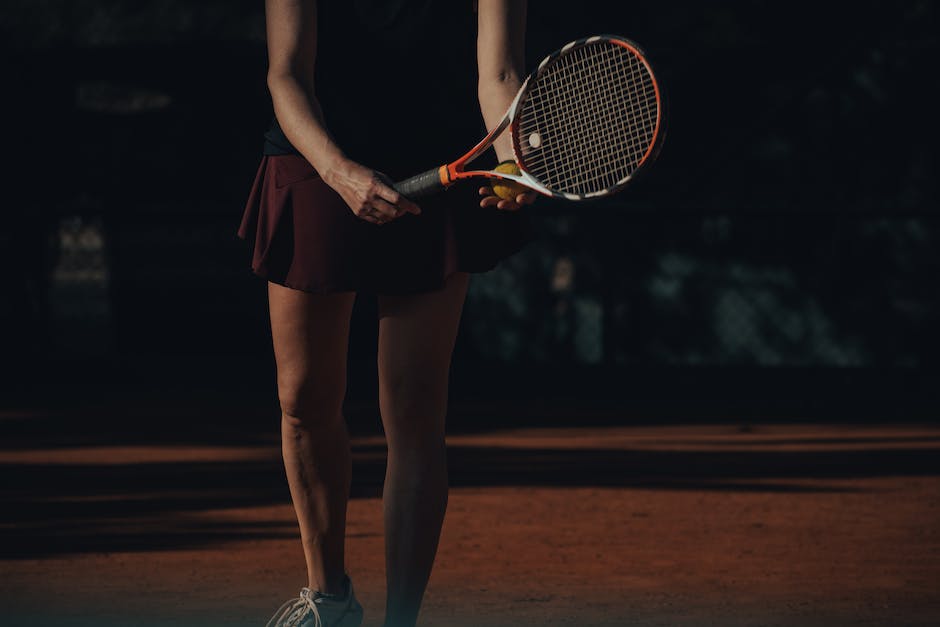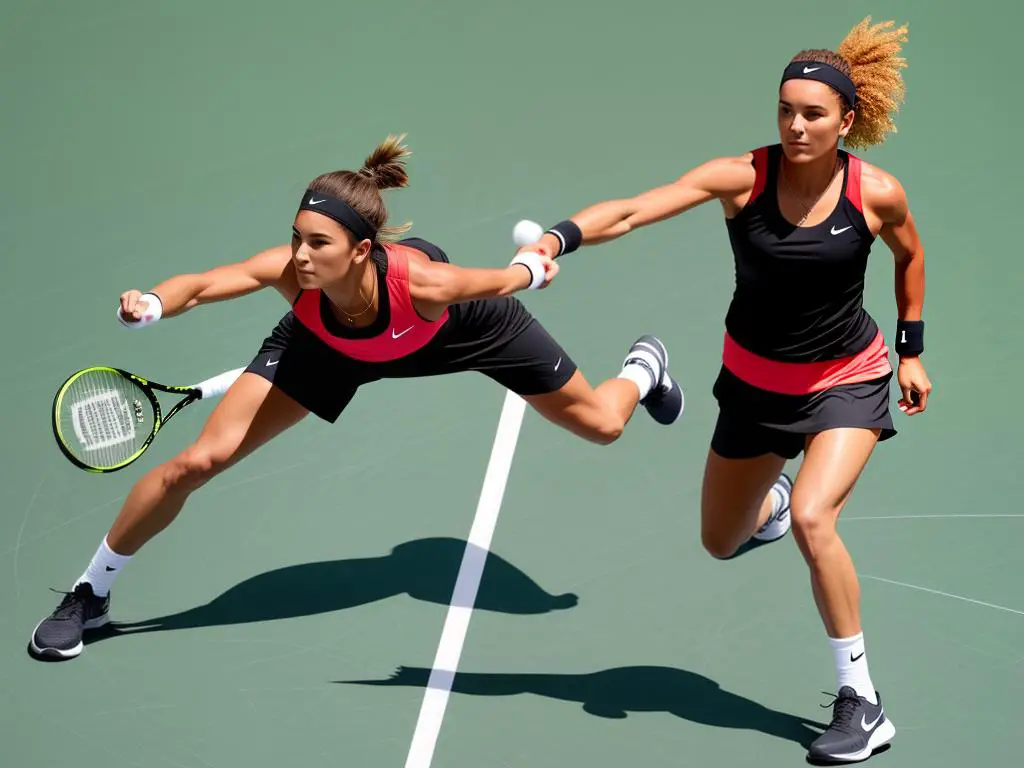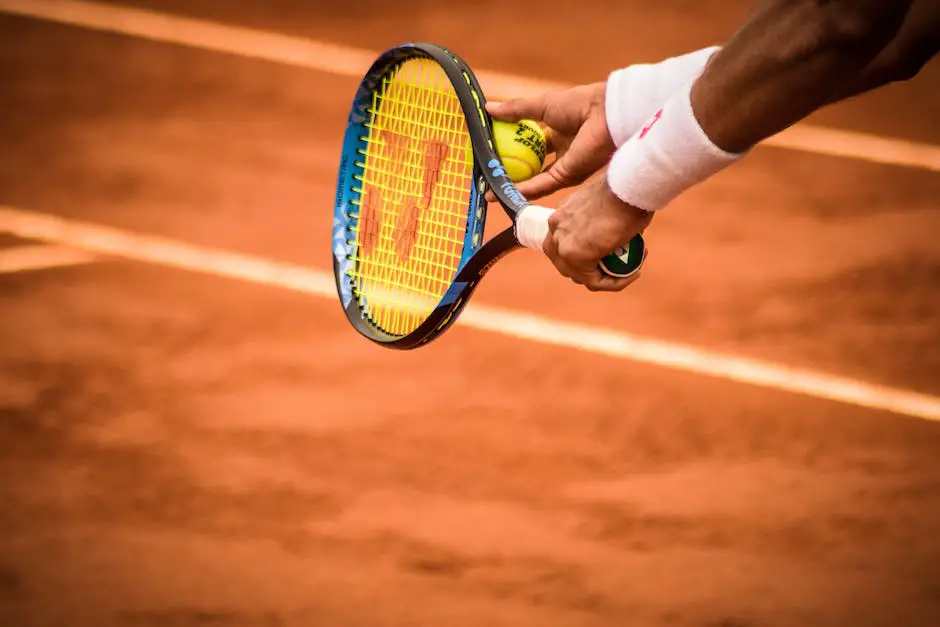For both the novice and seasoned player alike, mastering the dynamics of a powerful tennis serve can make all the difference in a high-stakes game. Engaging with the fundamental aspects of a tennis serve will not only gear you up with knowledge about important terms such as fault, let, backswing, flat serve, slice serve, and kick serve, but it will also aid in understanding the rules and aims of this pivotal move in the game. However, simply being conversant with the terms is not enough. One must strive to keep in tip-top physical condition with a focus on increasing general fitness, strength, flexibility, and balance. Through the incorporation of specific exercises such as those tailored for shoulder, arm, and wrist strength, as well as footwork, a player can significantly tap into their full serving potential.
Understanding Tennis Serve Basics
Understanding the Fundamentals
The tennis serve is one of the fundamental elements of the game. A good serve can give you an advantage early in the point and put pressure on your opponent. To serve, you should start by standing behind the baseline and preparing to throw the ball in the air. Your racket should be held in a continental grip, which means the base knuckle of your index finger should be on bevel 2 and the heel of your hand on bevel 1.
Tennis Serve Rules
In tennis, there are certain rules regarding the serve. The ball is required to land in the service box diagonally opposite from where you are standing. If the ball hits the net but still lands in the service box, it’s called a let serve and is replayed without counting as a fault. If the ball lands anywhere outside the service box or hits the net and does not land in the service box, it’s termed a fault. You are given two chances to serve legally and if both serves result in a fault, it’s called a double fault and you lose the point.
Understanding Different Tennis Serves
There are three basic types of tennis serves – flat serve, slice serve, and kick serve.
- Flat Serve: This serve is widely used for its speed and low bounce. The aim is to hit the ball straight and quick, with minimal spin making it hard for your opponent to return.
- Slice Serve: This serve involves hitting the ball with a certain angle of the racket to impart sideways spin. This causes the ball to move sideways after bouncing, making it difficult for the player to predict and return.
- Kick Serve: In kick serve, the ball is tossed a bit towards the left and hit at a high point generating topspin. The resulting serve bounces high and veers towards the opponent’s body making it tough to return.
Importance of Backswing
Backswing refers to the action of swinging the racket back in preparation for the serve. It’s an important part of your serving routine that helps generate power for the serve. A proper backswing begins with bringing the racket up and back before you toss the ball.
Practice: Tennis Serve Exercises
Drills form an essential part of learning and mastering the tennis serve. Start by practicing the tossing and swinging motion separately, then combine them. Use a tossing drill to work on the ball toss, aiming for consistency in height and direction. Once you feel comfortable with the toss, practice your swing mechanics, focusing on generating power from your legs up through your body and into the racket. Finally, put it all together: toss the ball, swing your racket, and meet the ball at the peak of your toss.

Physical Conditioning and Flexibility
Understanding the Importance of Physical Conditioning and Flexibility in a Tennis Serve
A strong and effective tennis serve demands much more than technique alone. The power, speed, and precision involved in a good serve are dependent upon the player’s overall physical condition, including factors such as strength, flexibility, balance, and fitness. Shoulder, arm, and wrist strength and flexibility play a crucial role since these body parts are in direct control of the racket. Good footwork, which is a combination of balance and strength, helps in positioning yourself correctly for the serve.
Building Shoulder and Arm Strength for Tennis
Effective serving requires strong shoulders and arms, as these muscles provide the power necessary for high-speed serves. Basic exercises with light weights, such as front raises, lateral raises, and overhead presses, can strengthen these muscles. To do these exercises, start with light weights of two to five pounds each, and do three sets of ten repetitions. As you build strength, consider increasing the weight size or the number of repetitions.
Wrist Exercises for Accurate Serves
Building wrist strength can lead to improved racket control and better serves in tennis. Wrist curls and extensions with a lightweight dumbbell can help build this strength. These exercises involve holding the dumbbell in your hand with your wrist over your knee, then curling or extending your wrist to raise the weight. They can be performed in three sets of ten repetitions, just like the shoulder and arm exercises.
Improving Flexibility through Stretching
Flexibility in your shoulders, arms, and wrists is just as important as strength when it comes to serving. Regular stretching exercises, such as arm circles, shoulder stretches, and wrist flexor and extensor stretches, can greatly improve your flexibility. These should be held for at least 30 seconds each and repeated three times on each side.
Developing Footwork for Effective Serves
Improving footwork requires improving both balance and strength. Plyometric exercises such as box jumps and lateral jumps can improve lower body strength and explosive power. Balance exercises like single-leg stands and yoga poses improve balance and stability. All these footwork exercises will allow you to position yourself efficiently during your service action.
Regular Cardio for Overall Fitness
Finally, regular cardio exercise is important for overall fitness and endurance. This can be as simple as running, swimming, or cycling for at least 30 minutes three times a week. By improving your aerobic fitness, you’ll be able to maintain higher energy levels throughout long, tough matches, which will keep your serves strong and accurate even in the final sets.
Remember, consistency is key in improving fitness, strength, balance and flexibility for your tennis serve. Regularly incorporating these exercises into your workout routine will result in noticeable improvement in your serves, and consequently, your overall game performance.

Practicing Various Types of Serves
Understanding the Tennis Serve Types
The first type of serve you should practice is the flat serve. This is the most simple and straightforward type of serve, involving a straight and speedy hit with minimal spin. To execute this serve, toss the ball overhead and strike it with a full, quick swing, aiming to the center of the net. Flat serves are powerful and direct, and when accurately executed, they can be challenging for opponents to return.
Perfecting the Flat Serve
To improve your flat serve, take time to focus on your toss. A good toss is crucial for a successful flat serve because it determines the serve’s direction and speed. Practice tossing the ball to the same spot consistently. It should ideally reach a height just above where you plan to strike it. Incorporating wrist snap into your serve can add extra power and precision.
Mastering the Slice Serve
Next, work on your slice serve. This serve puts spin on the ball, causing it to curve as it travels through the air and bounce off at an angle after it hits the ground. This can be an effective technique to throw off your opponent’s timing or positioning. To perform a slice serve, use a continental grip and brush the racket against the ball from right to left for right-handed players, and left to right for left-handed players. The ball’s trajectory should curve, and upon landing, the ball should bounce away from your opponent.
Drills for the Slice Serve
A good exercise for improving your slice serve is to aim for specific targets on the court. Set up targets in several locations on the service box and practice serving so that the ball lands on them. This will help improve your accuracy and control over the ball while adding the slice.
Grasping the Kick Serve
Finally, focus on the kick serve. This serve can bounce high and create an unpredictable ball movement that may surprise your opponent. To execute a kick serve, toss the ball slightly behind and to your left (for right-hand players, reverse for left-handed players). Contact the ball slightly under the peak of the toss and aim to brush the back of the ball upward at an angle. This should create both topspin and sidespin, causing the ball to bounce high and away when it lands.
Improving the Kick Serve
You can improve your kick serve by repeatedly practicing the motion to create spin. Start by serving slowly, concentrating on the rotation of the ball as you brush it upward. As you become more comfortable, you can add speed to your serve. Aim for consistency in both the height and the direction of the bounce.
Remember, achieving accuracy, power, and consistency in your serves requires plenty of practice. Devote regular time to serving drills for each of these types of serves, and you will notice improvement over time.

Putting all these theoretical insights into practice is vital in mastering the art of the tennis serve. Embarking on a robust journey of practicing different types of serves, including the flat serve, slice serve, and kick serve, offer an avenue to develop consistency, precision, and speed in your game. The essence of all these is not in the immediate win, but in being able to constantly improve and redefine your technique. Remember, tennis is a game of skill, strategy, and sometimes, sheer will. The perfect serve could be just a few practice sessions away. So, take your sport passion to the next level by gaining a comprehensive understanding of the tennis serve and enhancing it with the right daily physical exercises.